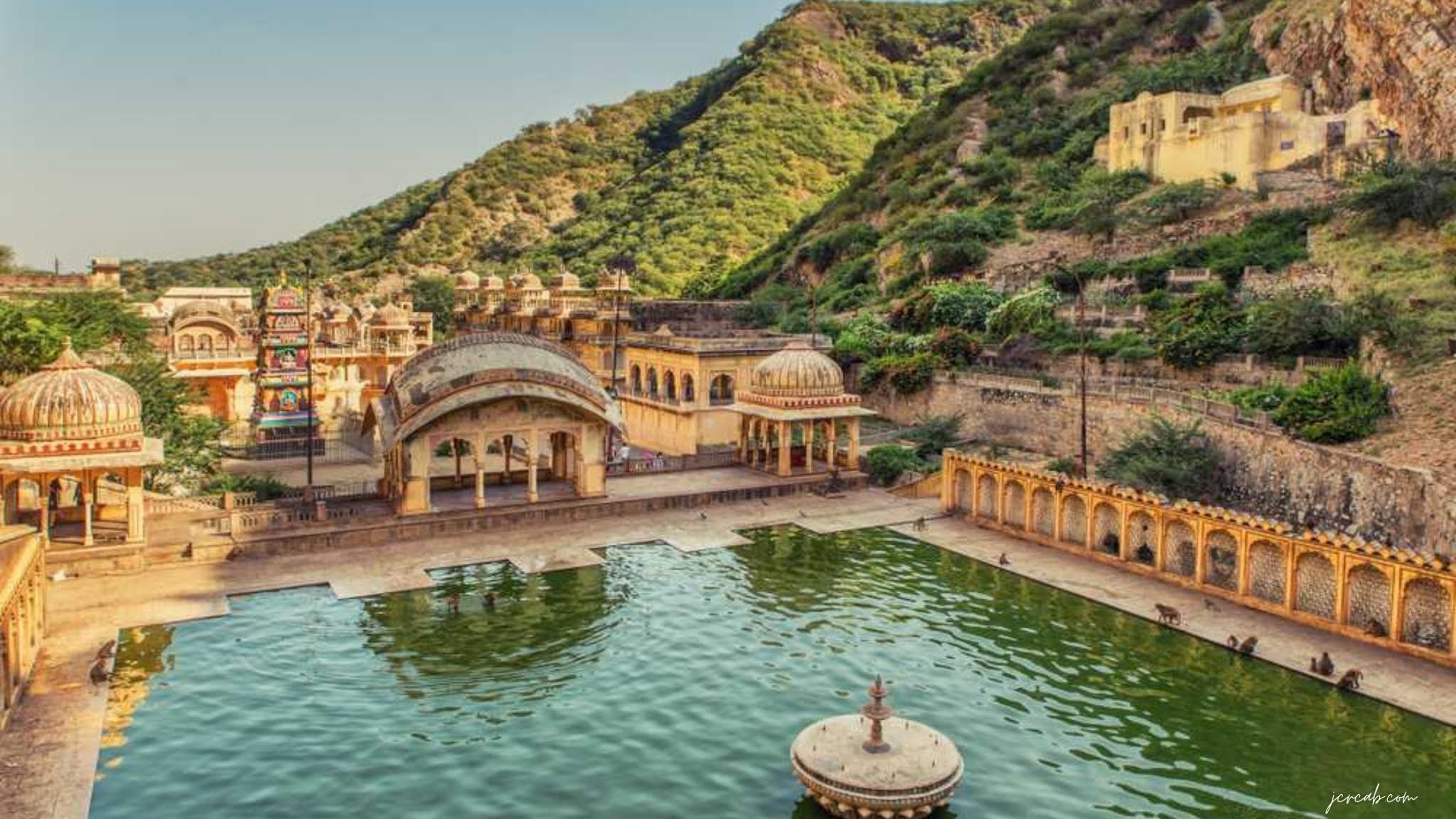The Birla Temple is one such temple in Jaipur that is a part of many Birla temples located in India. The Birla Temple is also known as the Lakshmi Narayan Temple which is situated on the Moti Dungri Hill. The Birla Temple of Jaipur was built by Birla in 1988 when the Maharaja of Jaipur gave land for a token amount of one rupee. Built-in white marble, the Birla temple structure is a combination of ancient Hindu architectural style and modern design. The walls of this temple are decorated with intricate carvings of deities, wise words of Puranas, and Upanishads. Pictures of historical recipients and spiritual saints like Socrates, Christ, Buddha, Confucius, etc. are also seen in this temple. If you want to go to see the Birla Temple of Jaipur, then you should visit Janmashtami, because during this time many religious activities take place in the temple. Choose a fleet and rent a taxi service in jaipur for a closer look at Jaigarh Fort with JCR CAB.
The Birla Temple is also called the Lakshmi Nayyan Temple as it is dedicated to Lord Vishnu (Narayana) his wife Lakshmi, the goddess of wealth. Lakshmi Narayana, carved with a piece of stone, gets special attention. Apart from all these idols, this temple also has a Ganesh idol that looks transparent. If you want to know more about Jaipur's Birla Mandir, then read this article, because here we will give you information about visiting Birla Mandir, its history, architecture, sightseeing of Birla Mandir and how you can reach here.
Birla Mandir Jaipur History
Today the place where Birla Mandir is located in Jaipur was given to Birla by the Maharaj in Jaipur as a token amount of Rs. After this, considering the land suitable for the temple, the Birla family built the temple here in the year 1988, since then this temple has become a place of pilgrimage for pilgrims.
Also Read:
Birla Temple Architecture
The Birla Temple of Jaipur is quite famous for its intricate carvings and fine work. Tourists coming here are fascinated by the beauty of this temple. The three huge domes of this temple depict three different modes of religion. Outside the main temple, you will find several glass windows depicting scenes from Hindu mythology. A large marble panel narrating mythological events inside the temple welcomes you. As soon as you enter the Birla temple, you first see an image of Lord Ganesha, which is considered very auspicious. From here you reach the main sanctum sanctorum of the temple where the idols of Lakshmi and Narayana are carved. These idols of Lakshmi and Narayan are derived from a piece of marble which is decorated with lavish jewelry and clothing.
Birla Mandir Jaipur Timings
The temple timings for regular visitors are between 6:00 am to 12:00 pm daily and 3:00 pm to 9:00 pm.
Tips for visiting Birla Mandir
- Please tell me that in this temple you cannot go with a camera or a phone.
- Taking pictures and making videos is not allowed in this temple.
- Walking in the temple verandah is also strictly prohibited.
- Those who are visiting this temple for the first time, then they should go to visit this temple in the evening. Because this temple offers some beautiful scenes in the evening.
- The aarti of this temple is very attractive, so you can plan your journey in such a way that you can join the temple aarti.
Best time to visit Birla Mandir
The best time to visit Birla Mandir is in the months of March to October as Rajasthan is a desert state and it experiences very hot summers. There is a summer season from April to June. The best time to visit Birla Mandir would be during the spring or winter months i.e. October to March as this time is good for enjoying holidays in Jaipur city and visiting the various places here. The days in these months are extremely favorable but the nights are less than 4 ° C cold. If you are traveling to Jaipur in these months, then do not forget to bring woolen clothes with you. The monsoon season is from July to September but Jaipur is low or medium.
How to reach Birla Mandir
The Birla Temple, also known as the Lakshmi Narayan Temple, is located 1.2 km from the Narayan Singh Circle. The distance of Birla Mandir temple from the railway station is about 5.3 km, Therefore, you can also take JCR CAB for cab and taxi.
_____ _
+919799735500
info@jcrcab.com
https://www.jcrcab.com/












